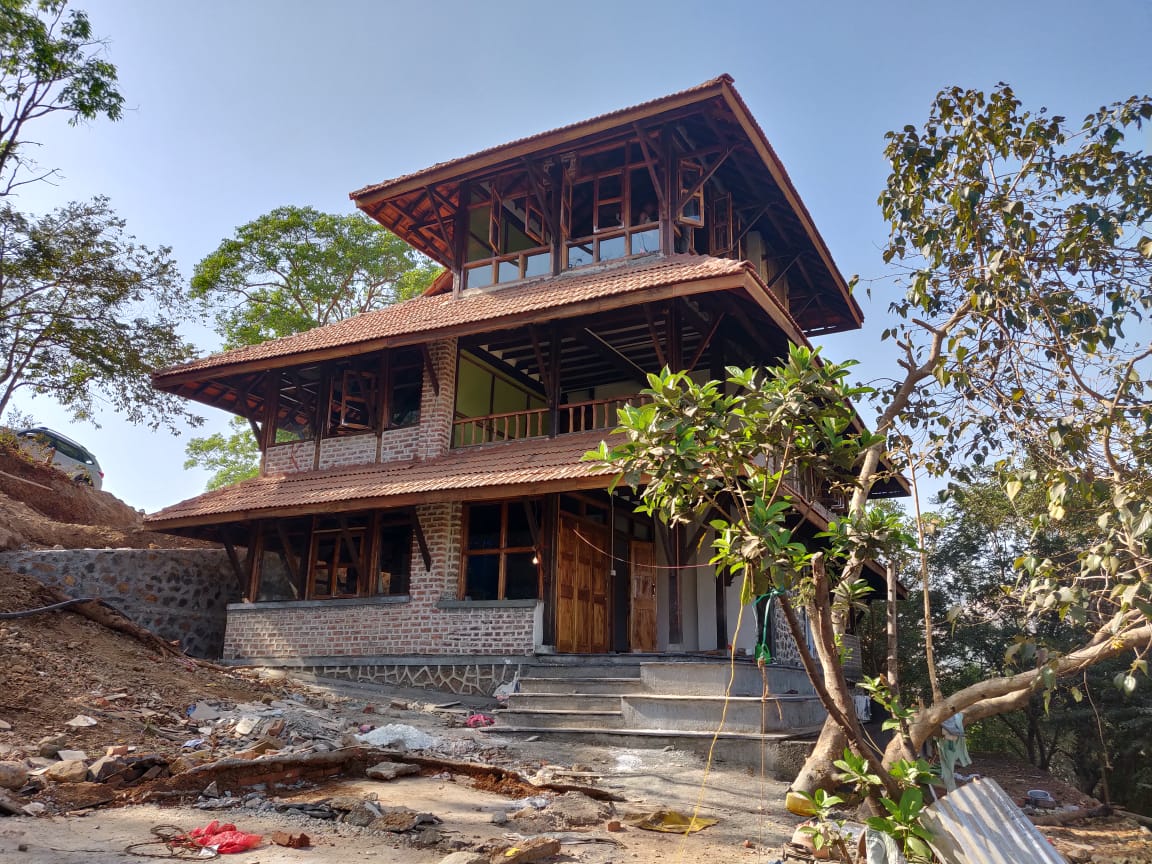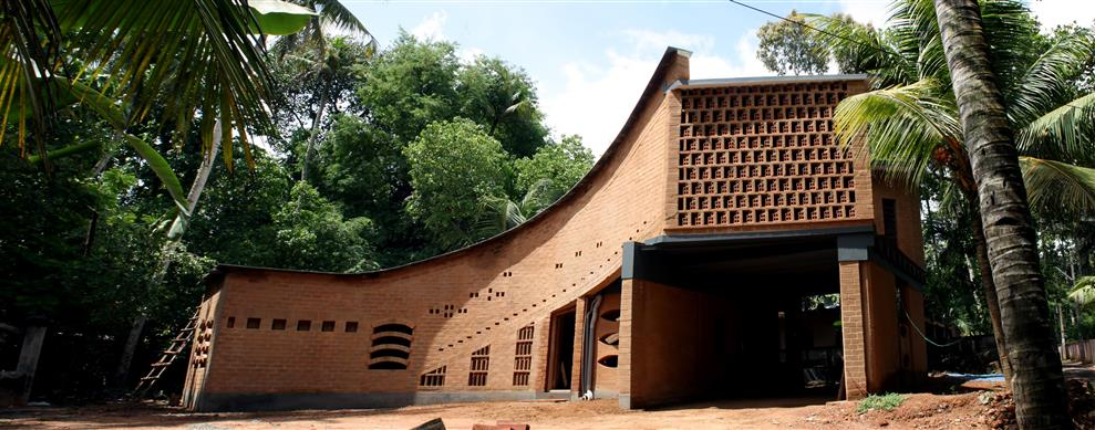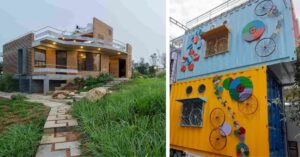Dump the AC, Use These 3 Green Cooling Solutions While Building Your Home!
“Everything we build from now onwards has to be eco-sensitive, energy efficient, cost efficient, people centered and value based. Otherwise we will lose the game,” says Padma Shri-award winning architect G Shankar, sharing solutions that can cool houses without ACs! #Innovation #LiveGreen #SustainableHomes

When talking about climate change, the one product that is often left out of the conversation is your Air Conditioner.
Yes, the famed AC has allowed people living in hot climates to better concentrate on their work and get a decent night’s sleep, and thus drive greater prosperity and happiness, especially in India.
But there is a catch. According to the International Energy Agency, the number of air-conditioning units will exponentially grow from 1.6 billion to 5.6 billion by 2050 because of increasing urbanisation, rising population, higher incomes, and falling AC prices.
Why stop at architecture? Your home can be an eco-friendly haven with our range of water-saving, air purifying and sustainable cleaners. Check out our range of home improvement products, here.
“It’s not too hard to imagine a vicious cycle in which more hot weather begets more demand for air conditioning ever and thus, even more, need for power. That, in turn, means more [carbon dioxide] emissions and even hotter temperatures. That negative feedback loop exists at a local level too. Air-conditioning units funnel heat outside, exacerbating the so-called ‘urban heat island’ effect, which makes cities warmer than the countryside,” writes Bloomberg columnist Chris Bryant.
In India, this vicious cycle could have a devastating effect, particularly on poorer households. We have to consider other alternatives to ACs.
Also Read: Beat the Heat with an Easy Cooling Solution That Costs a Tenth of an AC
Here are three housing solutions you can adopt:
1) Lime and mud mortar instead of cement

Using a combination of lime (instead of cement to bind tiles) and mud mortar (instead of cement to bind bricks), alongside naturally available stone and bricks gives a structure, room to breathe.
Lime is a particularly interesting material. Besides being recyclable, it also possesses a greater thermal insulation value.
Cement, however, obstructs a structure’s ability to breathe. This is what architect couple Dhruvan Hingmire and Priyanka Gunjikar did in a recent project at a private retreat in Thoran village near Kamshet, Maharashtra.
“After the completion of this project, we monitored the temperature inside and outside the house. Recently, it was 38 degrees Celsius outside, but a remarkable 25 degrees inside. So, you don’t even need an air conditioner. Even in the summer, we don’t use fans, except perhaps in the attic,” says Dhruvang, speaking to The Better India.
Also Read: Pune Couple Builds Cement-Free Breathable Homes That Don’t Need ACs or Fans!
2) Heat resilient rooftops

In Ahmedabad, the Mahila Housing Trust, a women-led non-profit promoted by SEWA, found a unique home cooling solution for low-income households in India—heat resilient rooftops called Modroofs developed by Hasit Ganatra, the founder of sustainable roofing firm Rematerials.
“Modroofs is a signature product of Rematerials, water-proof modular roofs made of paper waste and coconut husk that reduces the temperature of homes and provides an eco-friendly alternative to RCC roofs. They are also easily dismantled and reinstalled easily,” says a report in The Better India.
After collecting all the necessary data, they found that temperatures dropped by a significant 7-8 degrees Celsius inside their homes.
Also Read: From Cool Homes to Autos, an Ahmedabad NGO Is Making It Easier for Slum Dwellers to Bear the Heat
3) Traditional design
Sometimes, it isn’t about materials, as much as it is about how one designs a home. Vinu Daniel, a legendary architect from Kerala, did something rather unique with his uncle’s home.
Aside from using Compressed Stabilised Earth Blocks (CSEBs) which are essentially mud blocks and a complete wall made of beer bottle jaalis, he adopted the traditional Kerala home design features like the Nadumuttam (a traditional open courtyard) for his famed Valsal cottage.
Besides ventilation, the Nadumuttam harvests rainwater and directs it to the plants outside. A total eco-friendly feature.

“This allowed for more internal cooling. Since hot air is lighter, it would escape through the central courtyard opening. Meanwhile, the upper stories had a complete wall made of beer bottle jaalis and CSEBs. In ancient houses, there used to be an upper area, which had a gable full of holes, allowing hot air to escape the building. In our case, all the hot air escapes out from first-floor room jaali. Using beer bottles also allowed the light to flow in seamlessly as well. This design created conditions for natural cooling, making air conditioners redundant,” informs Vinu, speaking to The Better India.
Although the structure was changed due to creative differences with his uncle, it did offer up a unique home cooling solution.
Also Read: For Years, Kerala Man Has Used Recyclable Waste To Build Homes That Don’t Need ACs!
If you want to cool your home and avoid using ACs, it’s about getting the combination of design and materials right. However, if you’re going to go a step further with sustainability, these eco-friendly materials must be sourced locally and more importantly, the design must adapt well to local climatic conditions.
“We, the architects, are primarily responsible for climate change. This is because we are primarily responsible for the built-up environment. In the last 30 years, we have been talking about sustainability. Unfortunately, we are not learning, and the world is losing options. Everything we build from now onwards has to be eco-sensitive, energy efficient, cost efficient, people-centred and value-based. Otherwise, we will lose the game,” says Padma Shri-award winning architect G Shankar.
We must pay heed to his words.
(Edited by Gayatri Mishra)
Like this story? Or have something to share? Write to us: [email protected], or connect with us on Facebook and Twitter.
This story made me
- 97
- 121
- 89
- 167
Tell Us More
We bring stories straight from the heart of India, to inspire millions and create a wave of impact. Our positive movement is growing bigger everyday, and we would love for you to join it.
Please contribute whatever you can, every little penny helps our team in bringing you more stories that support dreams and spread hope.




















